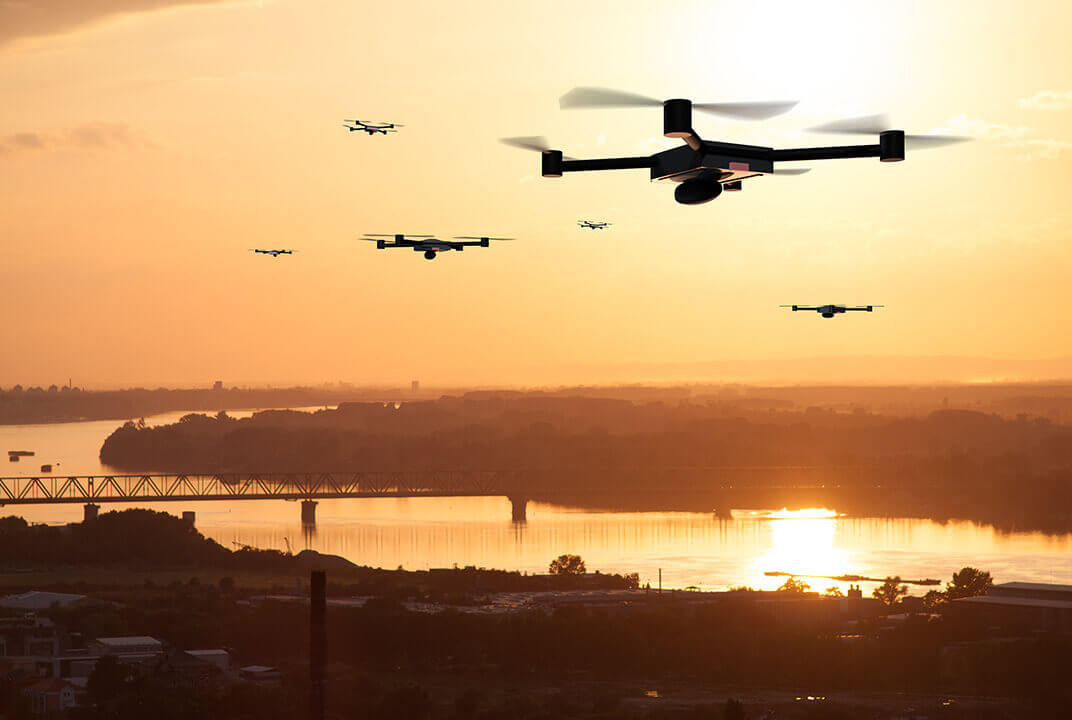Insight | Sensible pricing key to scaling the UAV market
Sensible pricing key to scaling the UAV market
null
A key barrier to market for UAVs – cost – is about to be challenged, thanks to conversations between Inmarsat, software solutions company AnsuR Technologies and the rest of the value chain.
The dawn of any nascent technology always feels like a portal into a brave new world. And so it is with the unmanned aerial vehicle (UAV) market. The unlimited potential of the UAV sector is genuinely transformational. From assisting emergency services and first responders to delivering medical supplies, eradicating the need to send humans into perilous environments and cutting down on society’s impact upon the environment, UAVs offer an exciting array of opportunities.
But new technology can also come at a cost – literally. One of the barriers to market for mainstream acceptance of UAVs is the cost of connectivity. Not only that, but a reluctance for all the players in the supply chain – the original equipment manufacturers (OEMs), satellite communications (satcom) terminal manufacturers, connectivity partners, software solution providers and end users – to come together and have a constructive conversation about sensible airtime pricing.
According to Charlie Clark, Director of Sales and Marketing at software solutions company AnsuR, having this conversation about pricing is critical. “In terms of future challenges, it's definitely getting the airtime pricing right so that you can make it affordable,” she explains.
Thankfully, Inmarsat’s Senior Director of UAVs and Unmanned Traffic Management, Anthony Spouncer, is initiating and facilitating these meaningful exchanges. Something that Clark’s colleague, Paul Gudonis, AnsuR’s Chief Strategy Officer, clearly appreciates as the sector looks to become more scalable. “For the first time, I'm actually hearing a very sensible approach on pricing for this market” he notes. “Before it used to be very disparate.”
According to Gudonis, these collaborative discussions between everyone in the value chain will open up more markets. As everyone gets a better understanding of the realities of the sector and the products that are needed, it will drive the entire industry forward thanks to more sensible and cost-efficient pricing options. “This is why this is a great conversation to be having,” he says. “Because getting that message out that satcom doesn't have to mean expensive, is essential.”
Tools for real world situations
If UAVs are all about enhancing the world in which we live, AnsuR is certainly helping to accelerate that process. In a nutshell, the company designs, develops and builds software that enables the delivery of high precision, high quality visual content (photos, video clips and real-time video streaming).
Ordinarily, sending high-quality imagery uses a lot of bandwidth, is expensive and takes time. AnsuR’s software solutions meet this challenge. By optimising images and video – reducing file size for example – it permits the transfer of that data at lower costs.
“It’s all about enabling the efficient transfer of data; the efficient use of bandwidth,” explains Clark. “And also offering cost savings. So, really, tools for real world situations where visual data is a requirement, but you have challenges, in terms of bandwidth or cost, in sending that data.”
Immediately, the value of this visual information is quite apparent for those operating in the UAV space. As Clark acknowledges, AnsuR’s software is of use to government, the military, disaster response and the emergency services. But it’s much broader than that. These applications are also of use to companies undertaking remote inspections, remote monitoring, surveying and streaming video to support logistics/drone delivery use cases.
“Industries such as utilities – oil and gas – maritime, rail, aero, drone delivery, civil protection… all these types of organisations,” she says. “They're moving from ground based or manned aircraft operations and are now deploying UAV capability to do things from the air.”
As for the benefits – both of using UAVs and getting crucial visual data sent back – Clark recognises the significance of both. “For example, if we consider remote inspection of pipelines, railways or other critical infrastructure,” she points out. “Today, if you do that with a manned aircraft, there’s a huge cost associated with that. Man hours, maintenance and operating the aircraft. If you can reduce those operational costs by moving to inspection via UAV and couple that with affordable airtime and a cost and bandwidth efficient solution for image and real-time video transfer, it’s a win – and reduces your environmental impact, that is huge.”
Satcom and software partnership critical
The partnership between AnsuR and Inmarsat began many years ago with AnsuR’s software being used to send critical visual information – usually from first responders or from disaster zones – over satcom. As the relationship has evolved, the pair have naturally moved into the UAV space – and this has enabled the size of UAVs needed to fly beyond visual line of sight (BLOS) to be reduced. As Gudonis explains, this has considerable value.
“In the past it was the large UAV platforms that could carry the satcom and sensor payloads needed for real-time video streaming. With the availability of smaller satcom terminals operating over L-band connectivity,” he explains, “smaller drones, which are cheaper to operate and manage actually open up new and exciting markets. So, it’s the partnership between satcom and software that is definitely important.”
Unsurprisingly, AnsuR is very happy with its partnership with Inmarsat. Gudonis points to Inmarsat’s legacy of safety, mobility and communications and utilising those qualities alongside the innovation inherent in the UAV market. “By combining our software with Inmarsat connectivity we can help people make smart decisions,” he says. “It’s going to save money, make operations more efficient and potentially help save lives. That’s a great partnership to be involved in.”
A game-changing solution
AnsuR is rightly bullish about the future. Its ambitions include becoming OEMs’ number one line fit option for enabling visual communication. And speaking to both Clark and Gudonis, it’s clear that there is a lot of excitement and optimism in the sector about its software solutions. “As soon as you start to explain the software and what it does, people are naturally inquisitive and excited about it,” says Clark enthusiastically. “Narrow bandwidth and high data video shouldn’t meet, but we’re enabling it and people can see this is game-changing.”
That’s why it’s important to maintain this collaborative approach. Clark believes that a co-created message – involving all the players in the value chain – will pay dividends. “It’s not just about our software,” she points out, “it’s the entire value proposition.”
And looking further afield, it’s apparent AnsuR believes that we’re only just scratching the surface of what UAVs’ transformative effect might be. “I think it's the things that we don't know about yet,” explains Clark. “As things evolve and new use cases come through and as younger generations start to think about how to use commercial UAVs - that kind of stuff excites me.”
For Gudonis, the catalyst for really unlocking the potential of UAVs is smaller and cheaper. “If you can bring down the cost of airtime – and Inmarsat’s initiatives are helping achieve that – and then combine it with our software, it takes it even further,” he concludes. “And then with the innovation on the technology side, you can bring down the size of the terminals. It’s just going to open it up to more and more markets and become much more sustainable.”
Long may these constructive – and collaborative – conversations continue.


